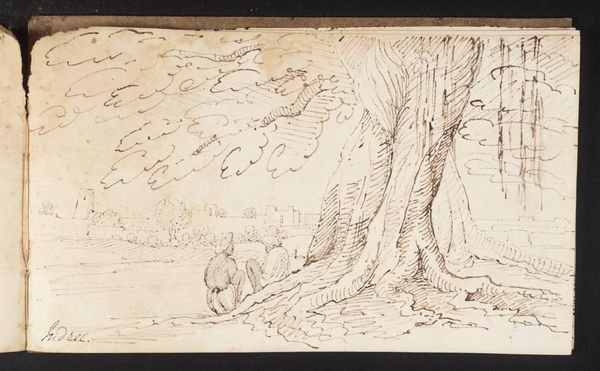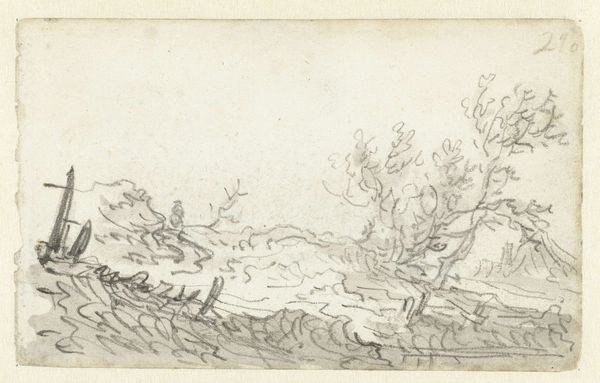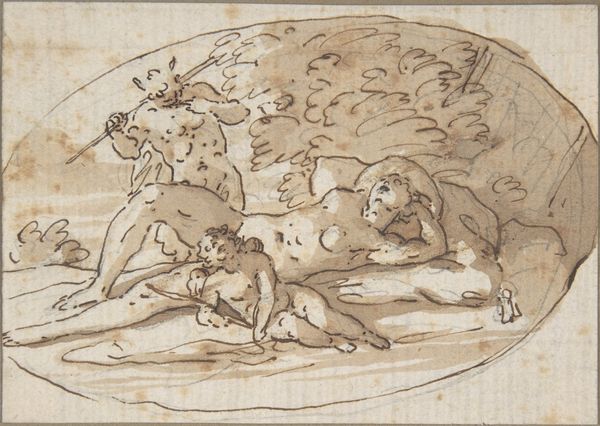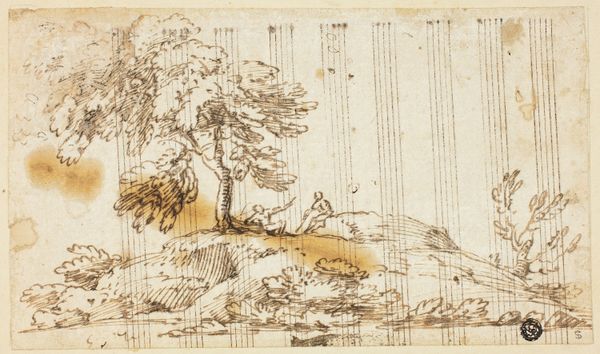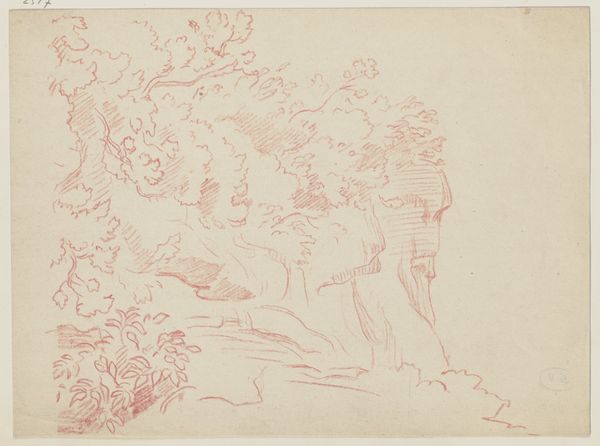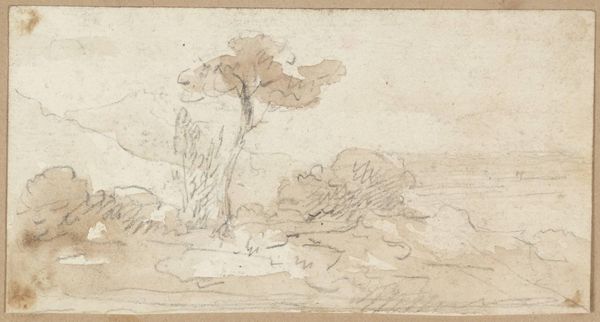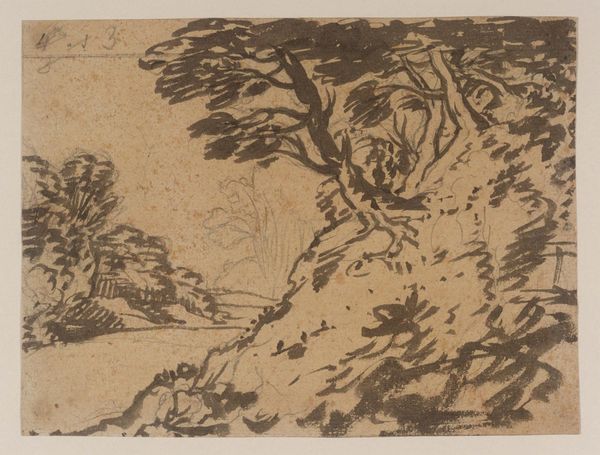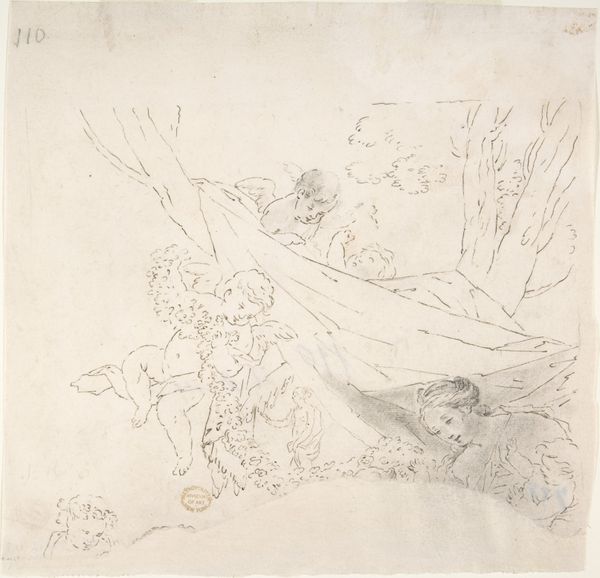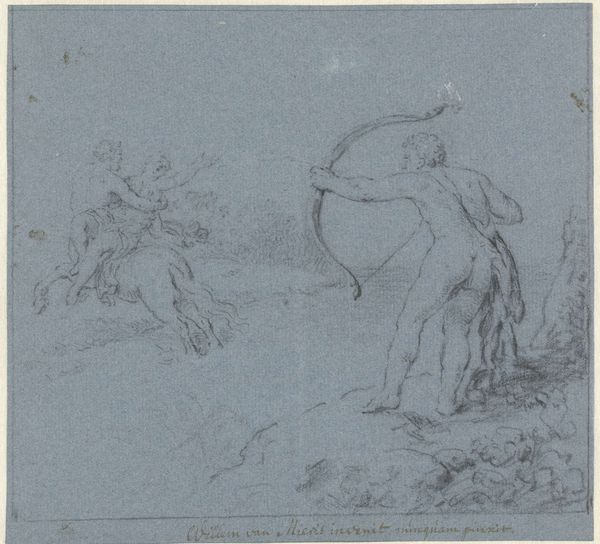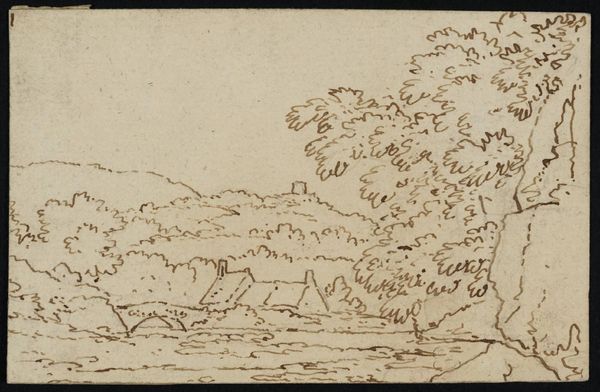
Dimensions: support: 78 x 118 mm
Copyright: CC-BY-NC-ND 4.0 DEED, Photo: Tate
Editor: This is Philip James De Loutherbourg's "Rocks beside the Neath River at Aberdulais Mill." It's a small, delicate pen and ink drawing, and it feels so immediate, like a fleeting impression of a place. What can you tell me about it? Curator: The Neath River was part of a landscape that was being reshaped by early industrialization. Consider how De Loutherbourg, as a theatrical designer, might have been drawn to the drama inherent in this intersection of nature and industry. How do you see that tension represented in this work? Editor: I guess I hadn't considered the industrial context. I was just enjoying the picturesque scene. Curator: Exactly. The picturesque itself was a cultural construction, often obscuring the social and economic realities of the time. De Loutherbourg, intentionally or not, is placing us within that complex dialogue. Editor: That really changes how I see the drawing. It's not just a pretty landscape. Curator: Precisely. Art can be a mirror reflecting both beauty and the uncomfortable truths of its time.
